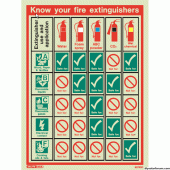OffGridForGood
Catch, make or grow everything you can.
From the picture and description - this could have ended very bad.
I don't know what inverter can operate in this wide range, makes me wonder what the current would be doing as the voltage drops below 48v.
Imagine if the pop happened while you were asleep, or just out of the house for a few hours.
is this a normal requirement for LTO?
Safety starts with following best practices in the original set up. If you think your set up is being judged harshly - you are not seeing the hazards we see, and you should re-evaluate.
I like to play with test set-ups on my workbench and try out new ideas. Sometimes I cobble together some parts and run a test under direct supervision. Then I disconnect it when I leave the work area. Non-permanent test set ups should not be left unattended, after all we are testing, we need to be present. Permanent systems need to be built to operate without supervision.
Clearly the original set up is not a model of safe battery practices, and wheather pointed out by members here or not does not alter the facts. We would be remiss to Not point out the hazards, 10's of thousands of others will see a posting on the forum, many of those viewers will not realize the hazards without this being pointed out.
I think this post should be moved to "up-in-smoke, learn from my mistake".
Interesting to see LTO - from what I have seen these cells are expensive compared to LFP - why use them for stationary set up? just learning experience or was there some specific reason to use these cells? IIRC the LTO voltage curve is basically 1.5 to 2.6v so a 22s will run 33v to 57v.My home build LTO battery had a fire last night.
I don't know what inverter can operate in this wide range, makes me wonder what the current would be doing as the voltage drops below 48v.
If you had not hear the pop, we may not have seen this posting...We heard a large pop and came out to find a small arc fire in one of the cells. One of the cells had popped completly apart. The wiring was arcing and causing a small flame.
Imagine if the pop happened while you were asleep, or just out of the house for a few hours.
10 amp active balancers: Did the cells require 10-Amp active balancers to stay in balance?We were running five 10 amp active balancers on five 22S banks.
is this a normal requirement for LTO?
Any insight since the event to indicate the cause of the fire? is there data available from your monitoring system to indicate if a cell went into over-voltage without the BMS cutting it off? What BMS(s) are you using for the 22s?Either:
- the balancer died
- a cell went bad, or
- the wiring became corroded and high current.
Good - glad you did. Now follow through:I post this to remind people that we need a mechanism to detect these events and shut everything off and alert you to the problem.
Safety starts with following best practices in the original set up. If you think your set up is being judged harshly - you are not seeing the hazards we see, and you should re-evaluate.
I like to play with test set-ups on my workbench and try out new ideas. Sometimes I cobble together some parts and run a test under direct supervision. Then I disconnect it when I leave the work area. Non-permanent test set ups should not be left unattended, after all we are testing, we need to be present. Permanent systems need to be built to operate without supervision.
Clearly the original set up is not a model of safe battery practices, and wheather pointed out by members here or not does not alter the facts. We would be remiss to Not point out the hazards, 10's of thousands of others will see a posting on the forum, many of those viewers will not realize the hazards without this being pointed out.
I think this post should be moved to "up-in-smoke, learn from my mistake".





